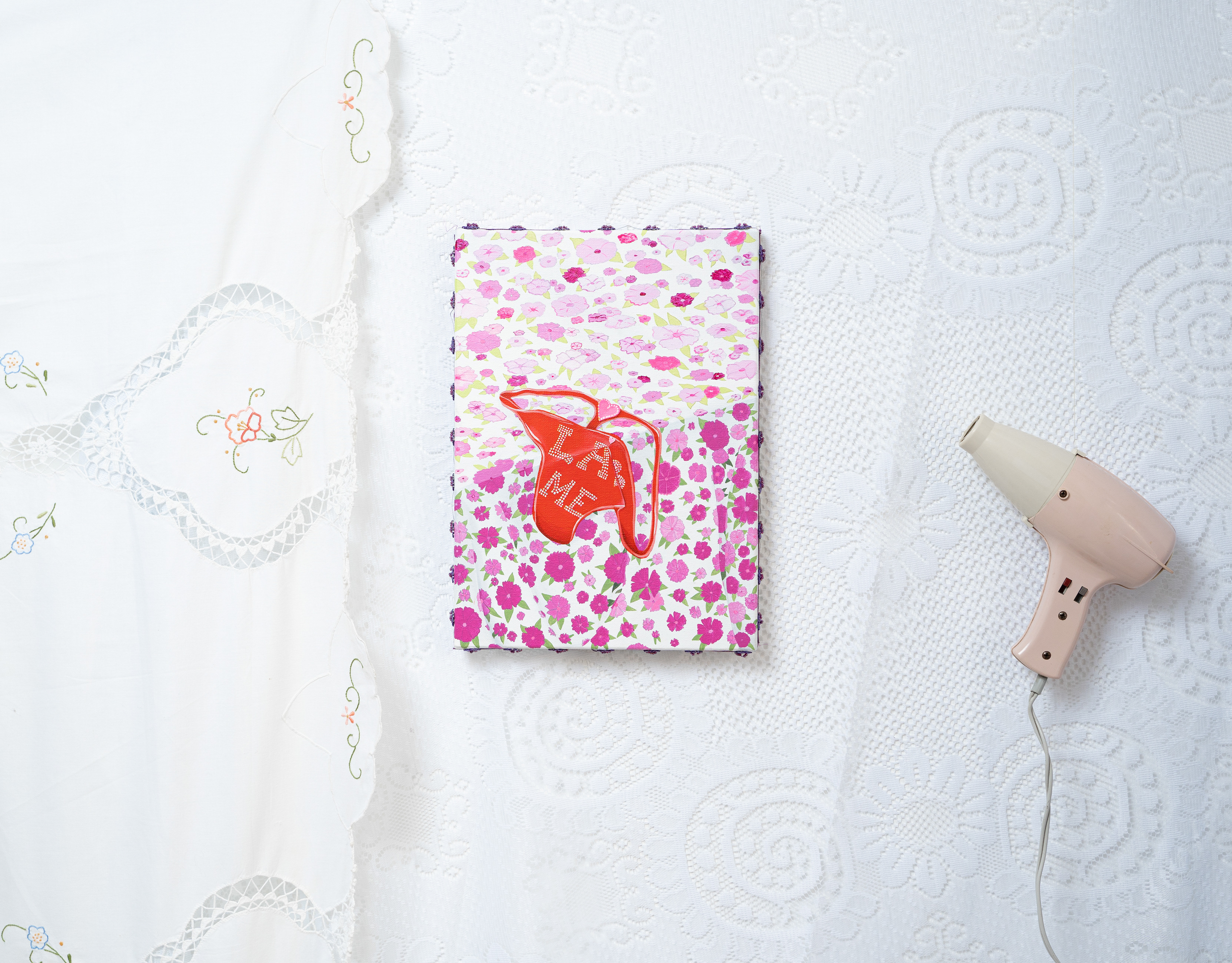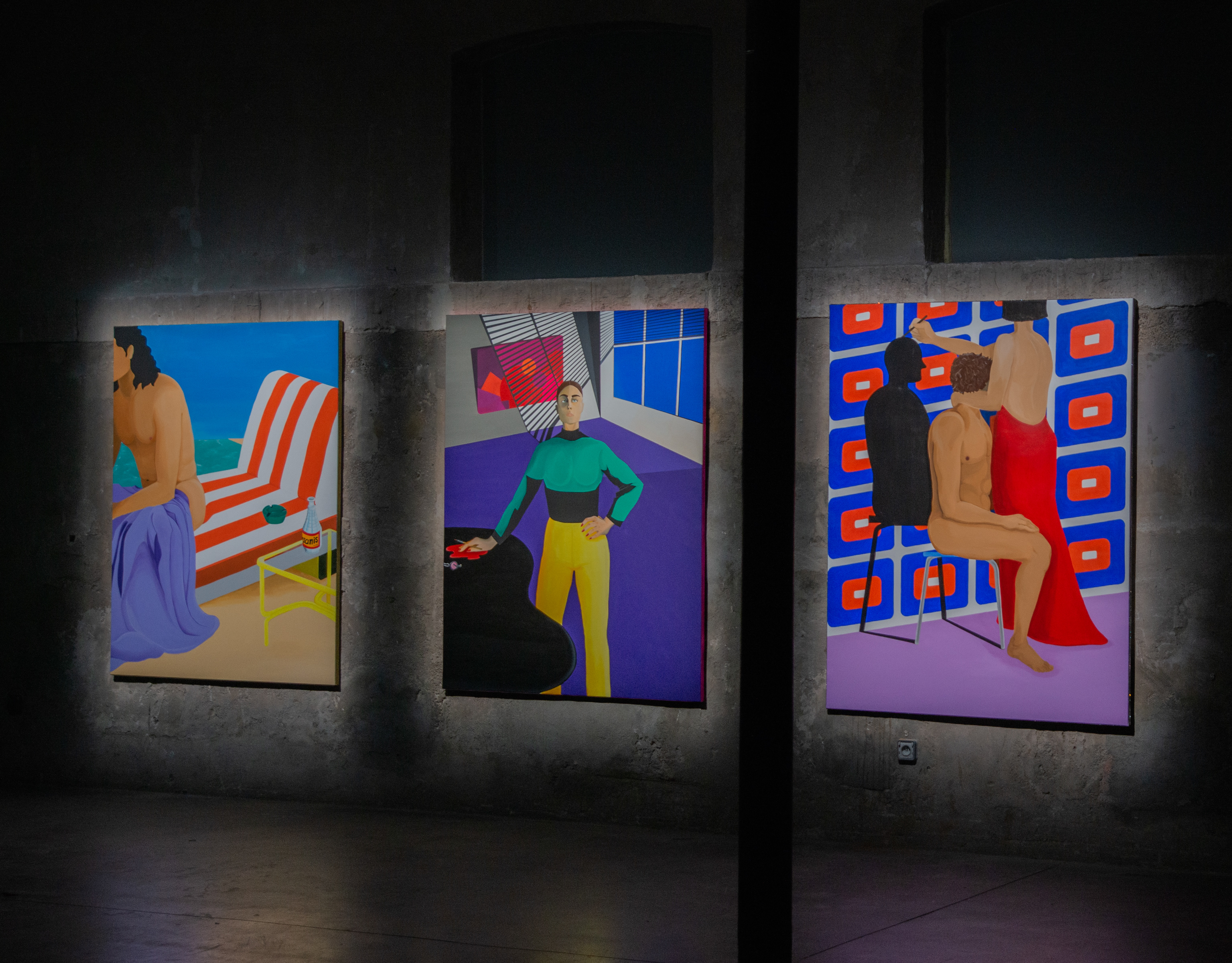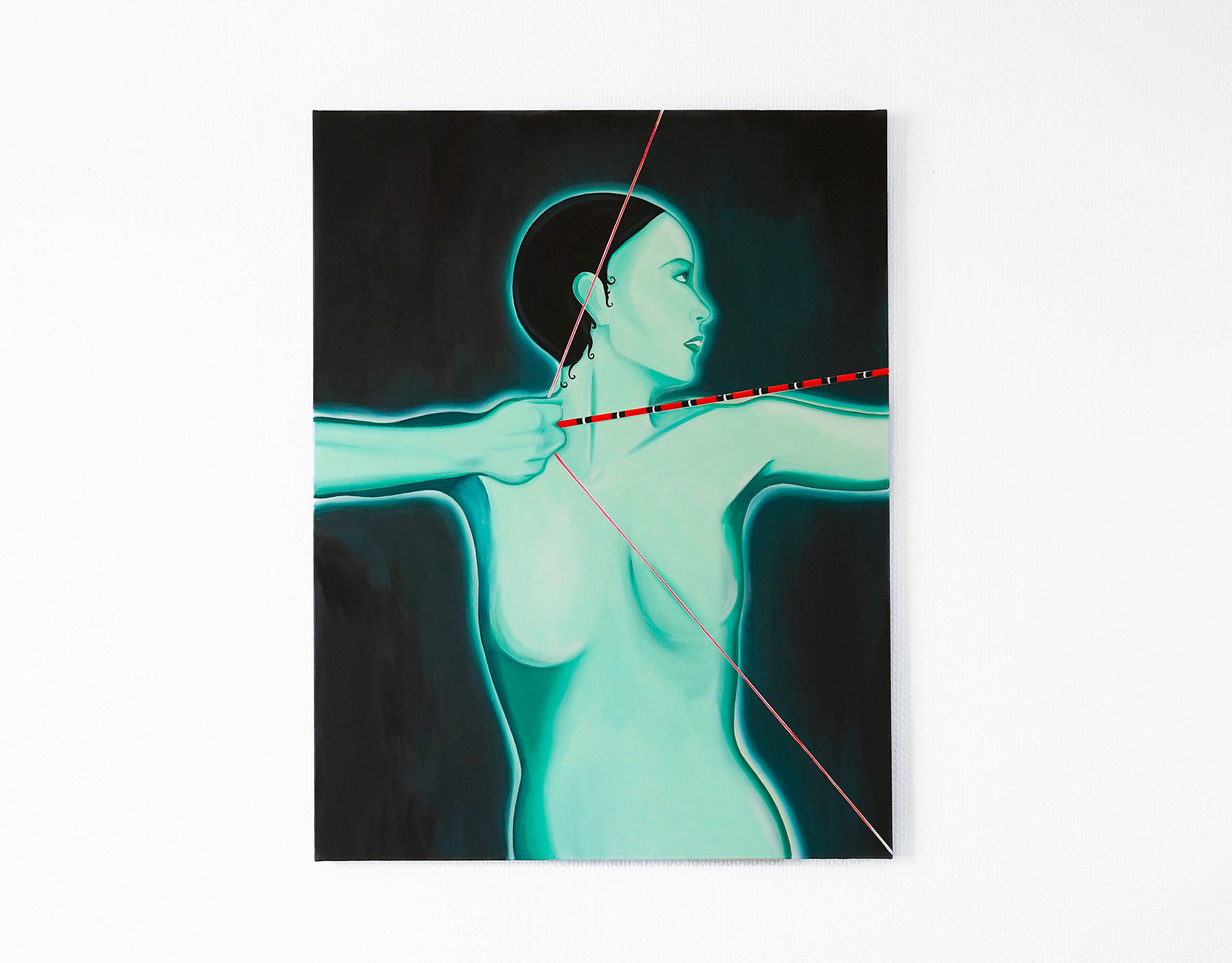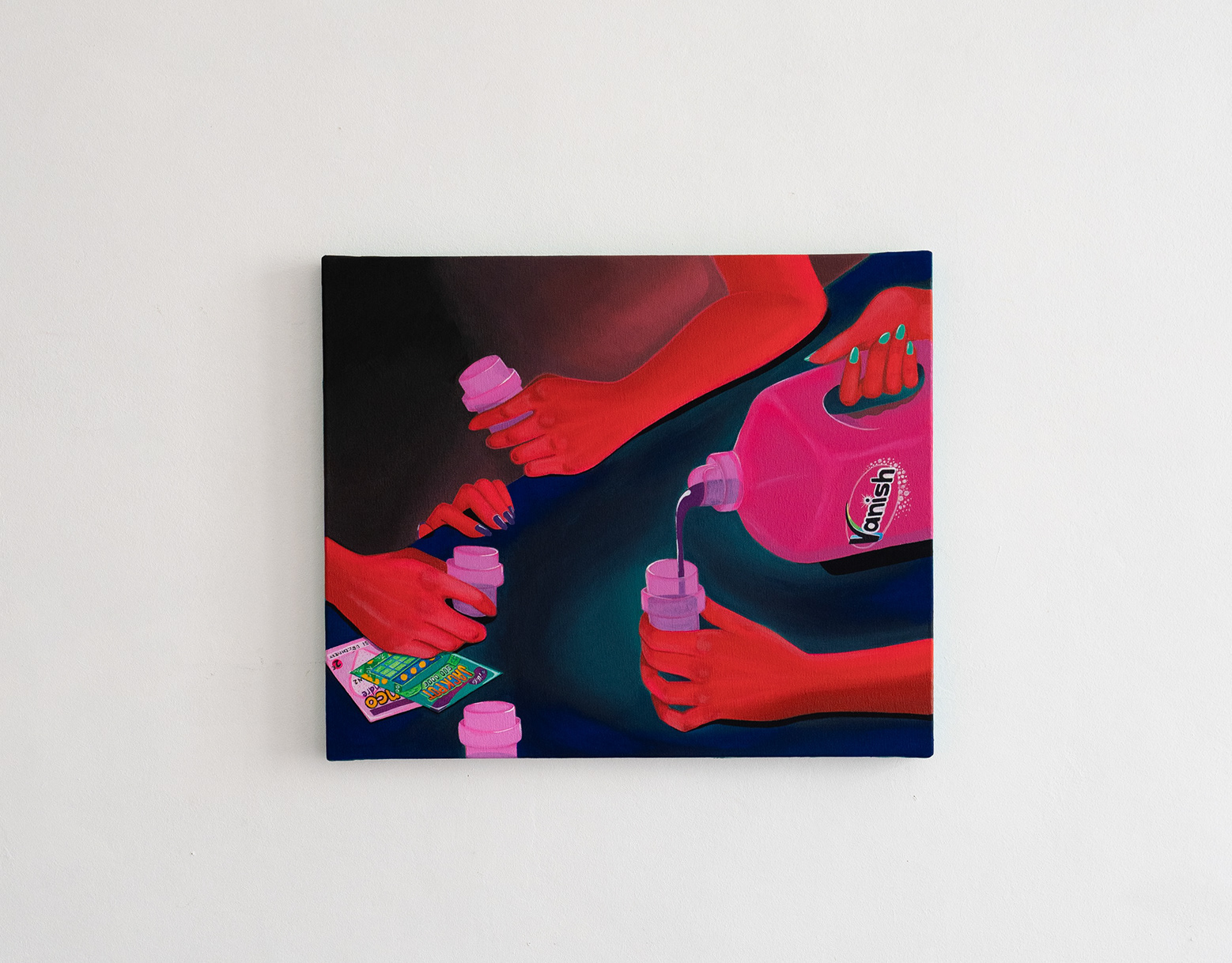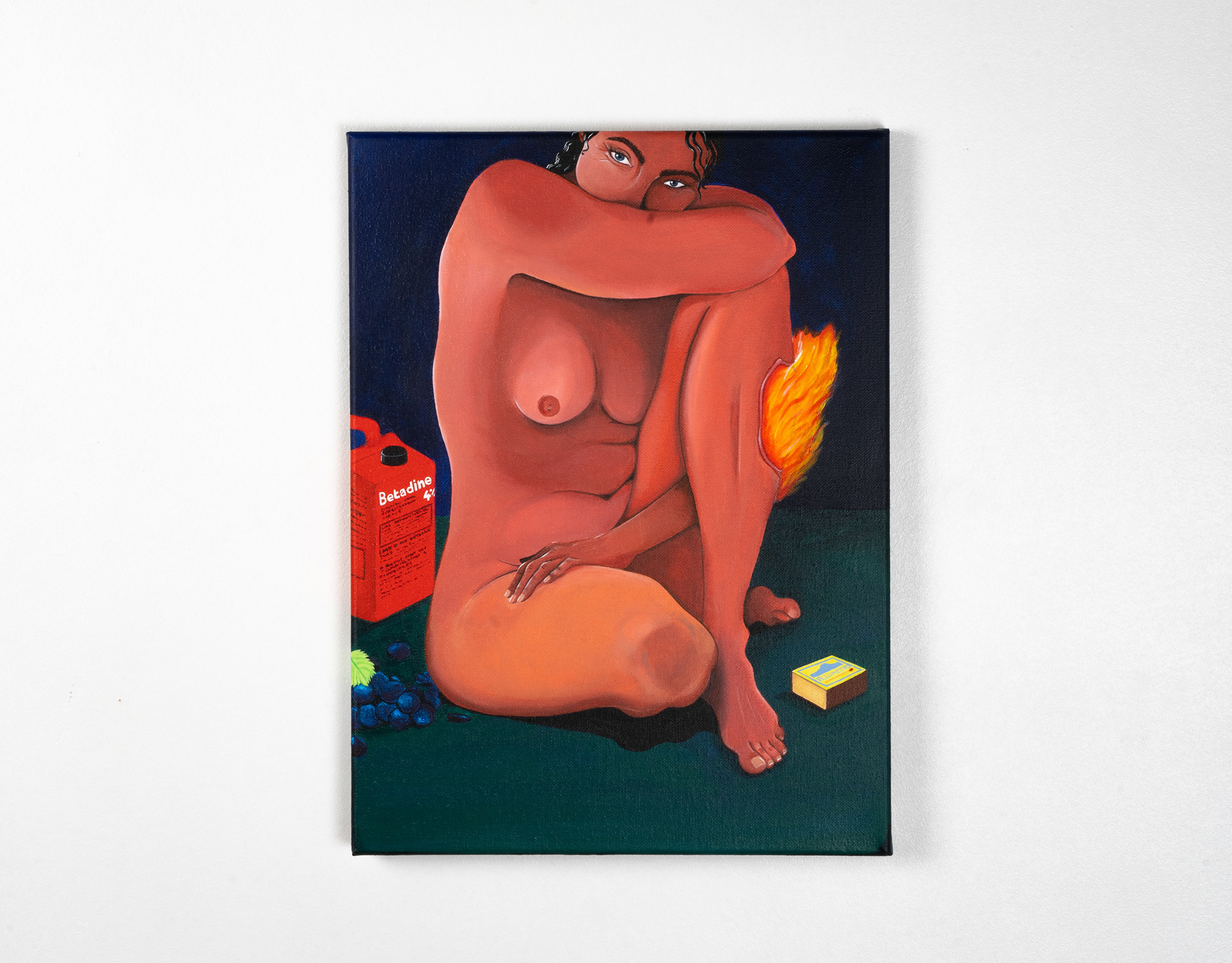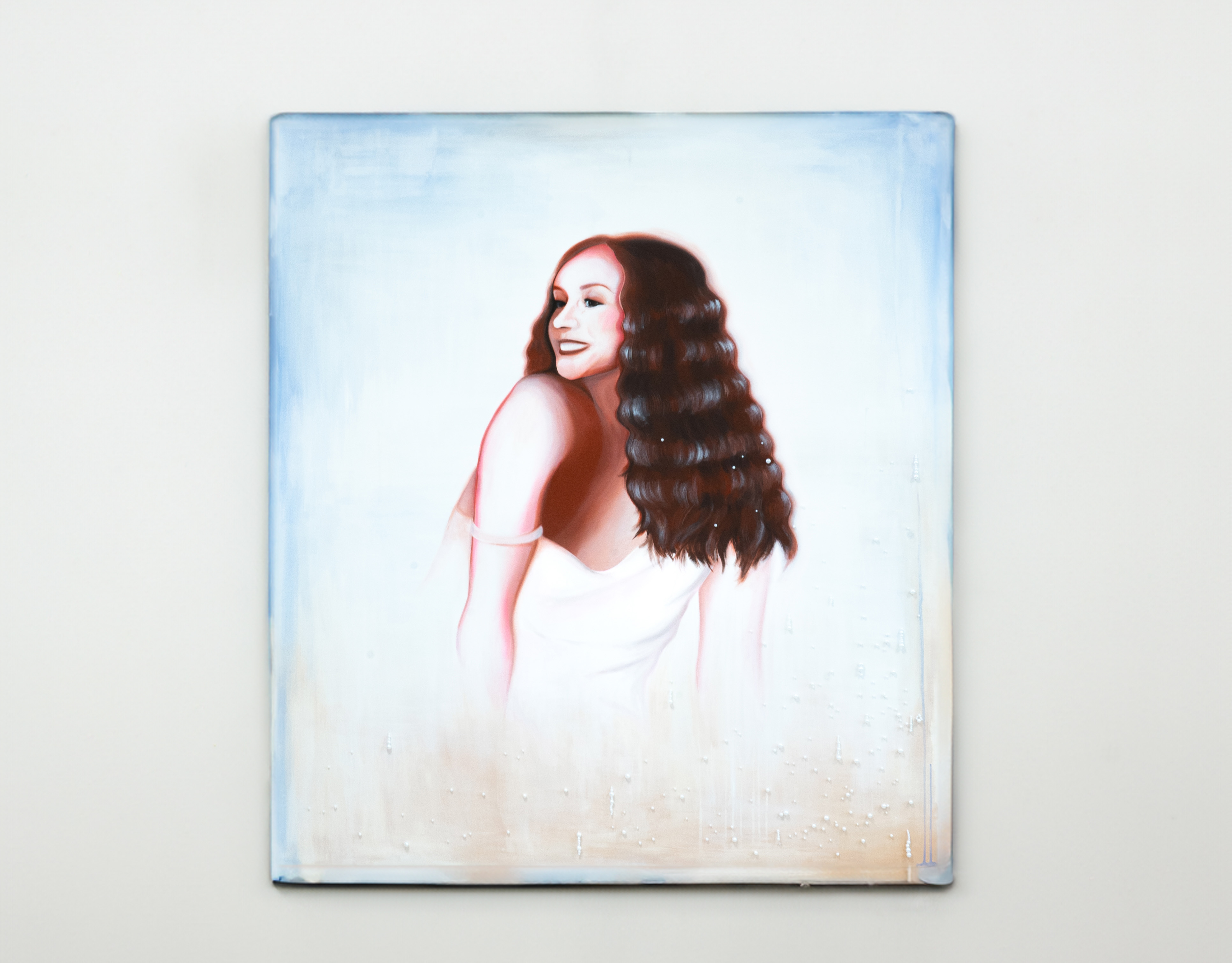Nomad's land, 2024, acrylic on linen and upholstery nails, 280 x 350 cm.
NOMAD’S LAND
“The house shelters reverie, the house protects the dreamer, the house allows us to dream in peace." wrote the philosopher Gaston Bachelard in The Poetics of Space. But what about these houses where dreams give way to nightmares? Should we flee? Is this even possible? In the work Nomad’s Land, Cécile Cornet suggests setting it on fire.
The house devoured by flames is a symbol that regularly recurs in the canvases by the artist. In certain magic rituals, the action of burning an object would allow to cleanse and heal the wounds linked to it, the ashes supposed to take away these energies far from us. Fire is also the creative force that the incendiary painter let it burn before our eyes, like a standard to warn us : I take back power now.
In a composition reminiscent of Andrew Wyeth’s famous painting Christina’s world, a young woman is lying on the ground, below the hill where the family home. However, if Christina struggles to return home, our sleeper emancipates herself and frees herself. Beneath its apparent tranquility lies reality the rest of the rebel warrior who declares her freedom. In this no man’s land with a science fiction feel, fragments of memories and mystical visions intertwine like scattered shards of life forming a puzzle enigmatic. This wandering through the twists and turns of the past, in search of ourselves, reminds us that our origins and our social constructions travel with us. They become invisible and nomadic companions in our quest for freedom, from which we can never truly part.
Nomad’s land is an inner battlefield, where emotional breakdown and burn-out gives way to regeneration, to a new state of the individual, freed from chains of conformism and stifling injunctions. By cutting herself off from the world, the character finally seems to take the time to reconnect to itself and to the Earth, the original home, like an echo of the Siluetas by Ana Mendieta, phosphorescent this time.
Nomad’s land is the promise of a different future, where rupture becomes the prelude to a new era of freedom and independence."
Pauline de Melo, curator, 2024.



